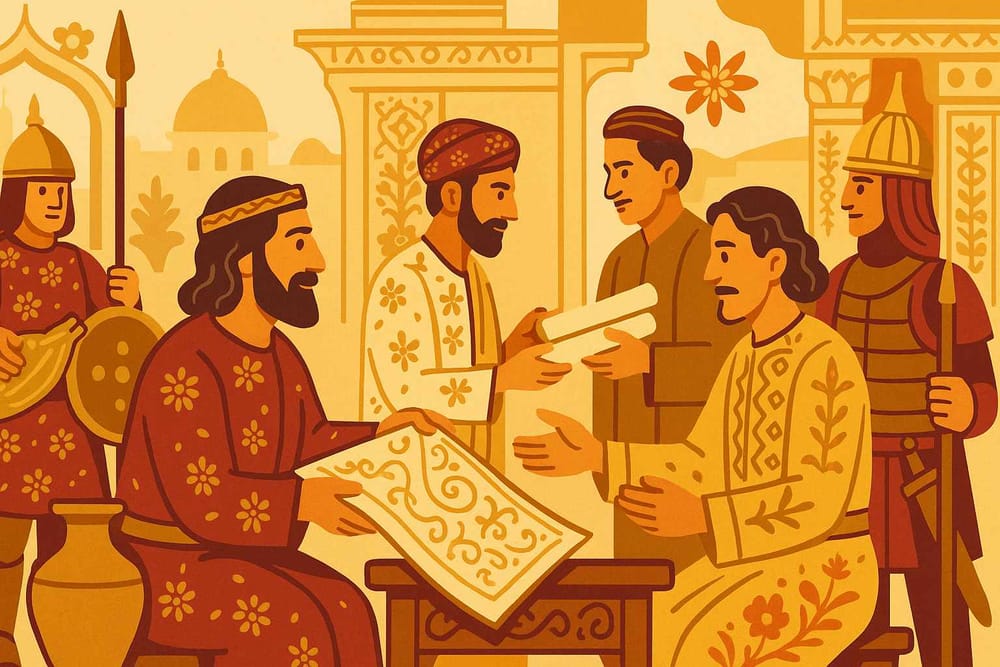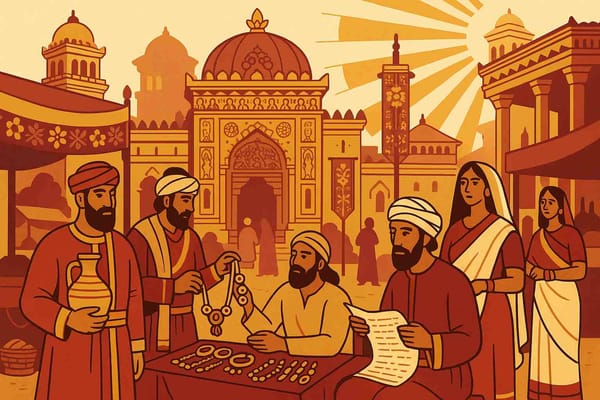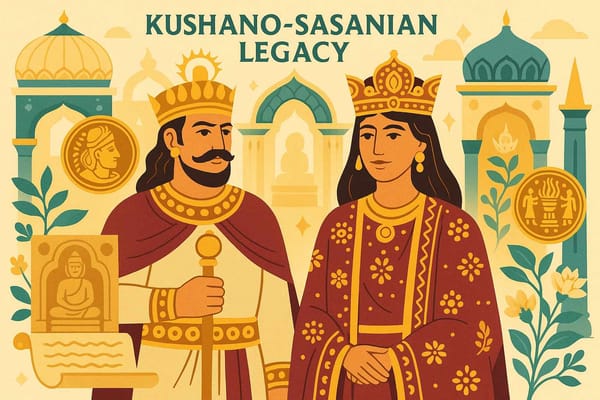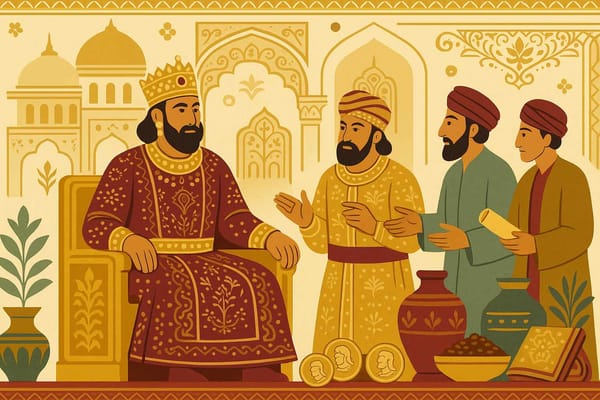
Exploring the Kushano-Sasanians: Empires Clash and Cultures Emerge
History isn't always about the biggest empires we read about in textbooks. Sometimes, the most fascinating stories are found in the spaces between them, at the crossroads where great civilisations met, clashed, and mingled. Imagine a time when the powerful Sasanian Empire of Persia cast its gaze eastward, towards the lands once ruled by the mighty Kushans. It was in this dynamic melting pot of Central Asia, in regions like Bactria and Gandhara, that a new power emerged in the 3rd and 4th centuries CE – the Kushano-Sasanians.
Their story isn't just one of conquest; it’s a deeply human story of how cultures can blend to create something entirely new and beautiful. It's a chapter of our shared past that reminds us how interconnected we have always been.
A New Power Rises from the Old
Around 225 CE, the Kushan Empire, which had once stretched across much of Central Asia and Northern India, was beginning to weaken. Seeing an opportunity, the formidable Sasanian Empire from Persia, under ambitious rulers like Ardashir I and Shapur I, expanded its territory. They took control of crucial Kushan lands, including Sogdia, Bactria, and Gandhara.
But they didn't just erase the Kushan legacy. In a show of political wisdom, the new Sasanian governors adopted the title "Kushanshah," meaning "King of the Kushans." This wasn't just a title; it was a bridge. It showed respect for the local traditions and people, announcing that while the rulers had changed, the region's importance and identity were being honoured. They were, in essence, a sub-kingdom, an allied branch of the Sasanians, ruling with a unique, semi-autonomous spirit.
A Tapestry of Art, Faith, and Currency
What truly makes the Kushano-Sasanians stand out is the incredible cultural fusion they oversaw. They became the patrons of a unique hybrid culture, a beautiful blend of Persian and Indian traditions that you can still see in the artefacts they left behind.
- Art that Spoke Two Languages: Their art is a breathtaking dialogue between Sasanian and Gandharan styles. Imagine sculptures and carvings where the royal, stately elegance of Persian art meets the spiritual grace of Buddhist art from Gandhara. This artistic influence was so profound that Kushano-Sasanian objects have been discovered as far away as China, carried along the bustling trade routes.
- A Confluence of Beliefs: This was a land of immense spiritual diversity. The Sasanian influence brought with it Zoroastrianism, with worship centred around deities like Anahita and Ohrmazd (Ahura Mazda). At the same time, Buddhism continued to flourish, with monasteries and caves like those at Kara-Tepe showing the deep roots of Buddhist practice in the region. It was a society where a Persian fire altar might not be too far from a serene Buddhist stupa.
- Coins That Tell a Story: If you want to understand the soul of the Kushano-Sasanian identity, you just have to look at their coins. They minted coins in gold and bronze that were a perfect blend of both worlds. Some coins followed the Kushan style, showing a standing king on one side and the deity Shiva with his Nandi on the other. Others followed the imperial Sasanian model, with portraits of the ruler wearing an intricate crown, and a Zoroastrian fire altar on the reverse. These coins were more than money; they were a declaration of their dual heritage.
Life Along the Silk Road: A Hub of Exchange and Conflict
The Kushano-Sasanian kingdom was strategically located right on the legendary Silk Road. This made them gatekeepers of a vital artery of global trade, connecting the Roman Empire in the West with the Gupta Empire in India and China in the East. This position brought them immense wealth and facilitated a constant flow of goods, ideas, philosophies, and technologies.
However, this control over lucrative trade routes also made them a target. Their history is marked by clashes with neighbouring powers, especially the rising Gupta Empire in India, as both vied for territorial supremacy and control over the flow of commerce. This constant push and pull defined their political landscape, making their existence both prosperous and precarious.
The Fading of an Empire
Like all great empires, the Kushano-Sasanian era eventually came to an end. Their decline was caused by a combination of factors. There were internal struggles for power, such as a bold rebellion led by Hormizd I Kushanshah, who even issued coins calling himself "King of kings of the Kushans" in defiance of the main Sasanian emperor.
Ultimately, it was the pressure from external invasions that proved too much. Around 360 CE, the arrival of the Kidarites from the north shattered their power, and the lands they once ruled were either absorbed back into the Sasanian Empire or taken over by new forces. Though their kingdom faded, their cultural legacy endured for centuries, woven into the very fabric of Central Asian and Indian history.
Connecting with Our Shared Heritage
The story of the Kushano-Sasanians is a powerful reminder of the incredible vibrancy of Indian culture and its spiritual roots, which have always been open to absorbing and harmonising diverse influences. This ability to integrate different traditions without losing one's own identity is a cornerstone of our heritage.
At Bhaktilipi, we believe that understanding these historical connections enriches our own spiritual and cultural lives. We are dedicated to digitally preserving and sharing the timeless devotional literature and stories that form the heart of our traditions. Exploring the past, with its grand empires and forgotten connections, helps us appreciate the depth and resilience of our own heritage.
If these stories of culture, faith, and history resonate with you, we invite you to continue your journey with us. Stay updated with more such explorations by subscribing to our newsletter, and join our community on Facebook, Instagram, and our YouTube channel.
A passionate group of people dedicated to preserving India's knowledge of Dharma, Karma, and Bhakti for ourselves and the world 🙏.
Comments
Related in

The Kushano-Sasanians- Explore the Empire's Secrets
Sometimes, the most fascinating stories of our motherland are not the ones we learn in school. We talk endlessly about the Mauryas, the Guptas, and the Mughals, but history has countless hidden chapters, tucked away in the sands of time. One such incredible tale is that of the Kushano-Sasanians, an

Exploring the Legacy of the Kushano-Sasanians: History and Impact
History isn't always about grand battles and massive empires that we read in school textbooks. Sometimes, the most beautiful chapters are written in the quiet spaces in between, where cultures meet, shake hands, and create something entirely new. Imagine a time when the powerful Persian Sasanian empire extended

Kushano-Sasanians- A Forgotten Era of History Explained
History, as we often read it, is a grand narrative of mighty empires and legendary conquerors. But sometimes, the most fascinating tales are hidden in the folds, in the chapters that speak not of conquest, but of confluence—a beautiful sangam of cultures. One such forgotten story is that of
